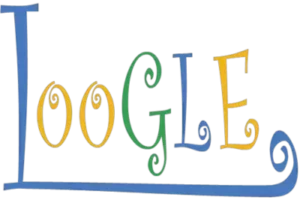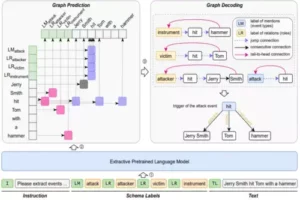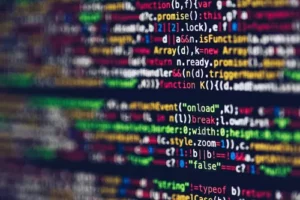Be prepared to be surprised as LayoutNUWA reveals the amazing hidden talents of Large Language Models! This model reveals the secrets of Layout Expertise, generating emotions and excitement in the field of design. They present a creative approach to graphic layout generation, a rapidly increasing field of study that is important for improving user engagement and information understanding. Soochow University and Microsoft Research Asia are involved in the research study of this model.
LayoutNUWA, this contribution, is a revolutionary effort in that it frames layout generation as a code generation task. This method improves the semantic information of layouts by using the latent layout expertise included in large language models (LLMs).
To do this, they created the Code Instruct Tuning (CIT) framework, which consists of three interconnected modules: Code initialization module, code completion module, and code rendering module we will see these modules in detail in the Introduction section of LayoutNUWA.

Work-related to LayoutNUWA
Autonomous layout creation, a critical problem in the field of autonomous graphical design, has received a lot of attention in a variety of applications, such as document layouts, posters, and user interfaces. Previously, design criteria were embedded into manually generated energy functions, or generative models such as GANs and VAEs were used. Self-concentration processes were used in transformer-based techniques to capture numerical contextual correlations between layout elements.
Diffusion models have recently acquired popularity for conditional layout generation. These traditional methods, on the other hand, mainly addressed layout generation as a numerical optimization problem, emphasizing quantitative factors instead of semantic information.
Recognizing these limitations raises an important question: can they include semantic information in layout creation to improve representation and the quality of generated layouts? This integration has two key benefits: it improves understanding of layout element interactions and taps into the semantic capabilities of Large Language Models (LLMs), resulting in more complicated and contextually relevant layouts.
Introduction about LayoutNUWA
Graphic design is an important part of how we organize and show information, influencing how users interact with it. The goal of layout generation, which is developing as an expanding topic of research, is to develop diverse and realistic layouts that simplify design processes for numerous applications such as user interfaces, indoor scenes, document layouts, and presentation slides. Current techniques regard layout creation as a numerical optimization process, treating layout elements mainly as numerical pairs (c, x, y, w, h). However, this approach has disadvantages in that it focuses mostly on quantitative characteristics while ignoring semantic information.

To answer the above problem, they provide LayoutNUWA, a game-changing approach that rethinks layout generation as a code generation task. Their method improves the semantic information within layouts and makes use of the LLM experience. NUWA is divided into three interconnected modules:
Code Initialization (CI) Module: This module quantifies the numerical conditions relevant to layout generation and initializes them as HTML code with strategically placed placeholders or masks.
Code Completion (CC) Module: Leveraging the formatting knowledge encoded within LLMs, this module fills in the masked portions within the HTML code with precise content and formatting details.
Code Rendering (CR) Module: The final step in this process, this module transforms the completed code into the ultimate visual layout output. It ensures a highly interpretable and transparent layout generation process by directly translating the code into a visualized layout.
These modules collaborate to analyze quantitative circumstances, fill in masked areas, and convert code into visualized layouts, resulting in a transparent and understood layout-generating process.
On three commonly used public datasets, they assess the model’s performance. RICO is a mobile application user interface design dataset with 25 element categories and 66K+ UI layouts. PubLayNet contains 360K+ layouts for documents divided into five-element groups. The magazine is a low-resource magazine is a layout dataset with approximately 4K annotated layouts and 6 element categories. LayoutDM is used to view the original validation data as the testing set and pre-process all of the data. Three datasets by removing layouts with more than 25 elements and separating the
95% and 5% of the data in the training and new validation sets were filtered.
Experiments on a variety of layout-generating tasks and datasets show that LayoutNUWA outperforms baselines and achieves significant performance improvements, particularly on low-resource datasets like the Magazine dataset.

Scope of LayoutNUWA in future years
The research presented has a wide range of possible future options. For example, the combination of code generation and layout generation allows for the discovery of even more complex and context-rich layouts that can accommodate a wide range of design requirements. Future research could focus on improving the code-based representation and developing more advanced ways for code-to-layout mapping, utilizing the full potential of Large Language Models (LLMs) for this purpose. Second, there is a lot of promise in the connection between instruction-changing techniques and layout generation.
Research study and implementation code accessibility
The related research paper on this model can be found on Arxiv. You can find the paper and all the related work on this model on the above-given link. The code for the implementation of this model is also available on GitHub. Any person can have access to these materials.
Potential applications of LayoutNUWA
The findings and approaches described in the preceding material have a broad range of potential applications with significant real-world impact. For example, as illustrated by LayoutNUWA, the concept of considering layout generation as a code generation assignment has enormous promise in the realm of web design and development. This approach could be used by web designers and developers to speed up the process of producing visually beautiful and user-friendly websites.
Designers can ensure higher precision, consistency, and adherence to design requirements by creating layouts directly in code language. This program has the potential to make web development more efficient and accessible, benefiting both developers and end-users by increasing the overall quality of online experiences.
Businesses in marketing and advertising, for example, may use these techniques to automate the creation of eye-catching posters and promotional materials. They could be used by educational institutions and publishers to streamline the layout design of textbooks and instructional materials, assuring clarity and visual coherence. In essence, these advancements have the potential to transform the way they approach design jobs in a variety of industries, from marketing to education and beyond, by providing more efficient and effective solutions for visual content creation.
Quantitative and Qualitative Evaluation
Quantitative evaluation: They checked LayoutNUWA’s performance on three datasets: the Magazine dataset, RICO, and PubLayNet. LayoutNUWA outperformed all baseline approaches on the Magazine dataset, outperforming them. When tested using the FID metric, it exceeded the strong baseline LayoutDM by better than 50%. These significant gains can be due to three important factors:
- Unlike previous approaches that generated numerical values, NUWA generates code with labels, leveraging semantic information such as width, height, position, and category.
- They introduced Large Language Models (LLMs) for the first time, resulting in significant performance improvements, reducing FID from 19.206 to 9.741. When employing CodeLLaMA, which is well-trained in code language, performance improved even more to 8.985;
- LayoutNUWA’s code-based approach provides for domain-agnostic training, allowing it to learn in any domain.
These results indicate LayoutNUWA’s robustness and effectiveness in different layout generation tasks, as well as its ability to provide high-quality, domain-agnostic results.

Qualitative evaluation: They use the Code Rendering (CR) method to draw the generated layout code, exhibiting the sampling rendering results of the PubLayNet dataset. When compared to other baselines, we can see that the layouts produced by LayoutNUWA have great element alignment and a low proportion of overlap between elements.
Furthermore, their results are the most in accordance with the Real Design data, i.e., the size and position of the generated element are essentially consistent with the real design, indicating that LayoutNUWA has successfully learned the distribution of document layouts by treating the layout generation task as a code generation task, resulting in more precise and realistic layouts.

Final words about LayoutNUWA
In this study, they offer LayoutNUWA, a novel technique that considers layout generation as a code generation process, successfully expanding layout semantics and using LLMs’ hidden expertise. Extensive trials on multiple datasets have shown that their strategy is superior. This study has the potential to revolutionize the field of layout generation by paving the way for further investigation and development of semantic-aware layout-generating systems in a variety of applications.
Reference
https://github.com/ProjectNUWA/LayoutNUWA
https://arxiv.org/pdf/2309.09506v2.pdf
Similar Posts
-
LayoutPrompter: Automatic-layout generation using with Large Language Models

-
LOOGLE: Long-Context perceive extended phrases

-
Mirror: An Ubiquitous Model for Information Extraction related Tasks

-
TopicGPT: In-context Topic Generation using LLM (Large Language Model)

-
Microsoft Interns Revolutionize AI: LEMA the Error-Driven Learning

-
INT8 quantization: Large Language Models (LLMs) effects on CPU inference

